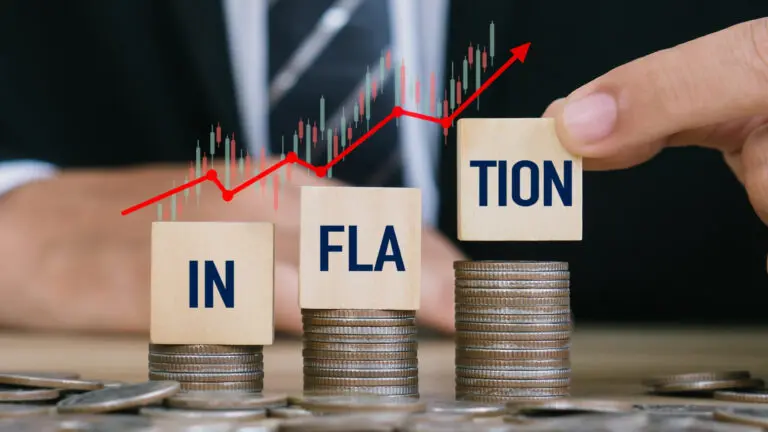
SEPTEMBER 2025 INFLATION – LOWEST SINCE JUNE 2017
It looks like the inflation rebound in August was the proverbial flash in the pan. CPI Inflation fell sharply in September 2025 to 1.54%; the lowest in 99-months. Between October 2024 and September 2025, CPI inflation has fallen 467 bps from 6.21% to 1.54%. Food inflation has now remained in negative zone for four months in a row; and at its lowest level in recent memory.
In the last few weeks, there have been concerns that the late deluge in many parts of India could again trigger a spike in food prices and a weaker Rabi harvest. However, it had limited impact on ground-level food inflation, which continues to taper. In October 2024, food inflation had peaked at 10.87%; and in last 1 year the food inflation has fallen 13.15 percentage points to the current level of -2.28%.
VEGETABLES AND PULSES LEAD FOOD INFLATION LOWER
Food inflation (47.25% of the basket) was in negative for the fourth month in a row.
| Month | Food Inflation (%) | Core Inflation (%) | Headline Inflation (%) |
| Sep-24 | 9.24% | 3.49% | 5.49% |
| Oct-24 | 10.87% | 3.67% | 6.21% |
| Nov-24 | 9.04% | 3.64% | 5.48% |
| Dec-24 | 8.39% | 3.58% | 5.22% |
| Jan-25 | 6.02% | 3.67% | 4.26% |
| Feb-25 | 3.75% | 3.95% | 3.61% |
| Mar-25 | 2.69% | 4.10% | 3.34% |
| Apr-25 | 1.78% | 4.07% | 3.16% |
| May-25 | 0.99% | 4.17% | 2.82% |
| Jun-25 | -1.01% | 4.40% | 2.10% |
| Jul-25 | -1.76% | 4.10% | 1.61% |
| Aug-25 | -0.69% | 4.20% | 2.07% |
| Sep-25 | -2.28% | 4.20% | 1.54% |
Data Source: MOSPI & Ministry of Finance Estimates
There are interesting takeaways from the inflation data. The sharp fall in food inflation and the headline inflation in September 2025 can be attributed to the spike in the base year data. However, what is interesting is that in 2025 overall; the food inflation has averaged 1.05%, while headline inflation has averaged 2.72%. The only concern has been the core inflation, which has been impacted more by global trade and tariff constraints.
NON-FOOD INFLATION: URBAN VERSUS RURAL
Between August 2025 and September 2025, headline inflation tapered from 2.07% to 1.54%. During this period, headline rural inflation fell from 1.69% to 1.07%, while headline urban inflation also fell from 2.47% to 2.04%. What about food inflation? Between August and September 2025, food inflation softened from -0.64% to -2.28%. Rural food inflation softened from -0.70% to -2.17%, while urban food inflation dipped from -0.53% to -2.47%.
| Non-Food Basket |
Non-Food Weights |
Rural Inflation |
Urban Inflation |
Headline Inflation |
| Clothing | 6.32 | 2.17 | 2.60 | 2.36 |
| Footwear | 1.04 | 1.66 | 1.95 | 1.78 |
| Clothing and footwear | 7.36 | 2.13 | 2.52 | 2.28 |
| Housing | – | – | 3.98 | 3.98 |
| Fuel and light | 7.94 | 1.71 | 2.59 | 1.98 |
| Household goods and services | 3.75 | 2.00 | 2.77 | 2.37 |
| Healthcare | 6.83 | 4.45 | 4.15 | 4.34 |
| Transport and communication | 7.60 | 1.93 | 1.69 | 1.82 |
| Recreation and amusement | 1.37 | 2.00 | 1.99 | 1.97 |
| Education | 3.46 | 3.08 | 3.68 | 3.44 |
| Personal care and effects | 4.25 | 19.56 | 19.08 | 19.39 |
| Miscellaneous | 27.26 | 5.72 | 4.98 | 5.35 |
Data Source: MOSPI & Ministry of Finance Estimates
In the non-food basket; urban inflation has been higher in clothing, footwear, fuel, household goods, recreation, and education. On the other hand, rural inflation is higher for transport & communication, Personal Care Effects, and other items. The high inflation number on personal effects is due to the impact of gold and silver prices.
FOOD BASKET: HOW RURAL AND URBAN INDIA STACKED UP?
Food basket, with a weightage of 47.25%, is a major swing factor for CPI inflation.
| Food Basket |
Food Weights |
Rural Inflation |
Urban Inflation |
Headline Inflation |
| Cereals and products | 12.35 | 1.70 | 2.75 | 2.06 |
| Meat and fish | 4.38 | 1.68 | 2.96 | 2.15 |
| Egg | 0.49 | 2.79 | 2.66 | 2.76 |
| Milk and products | 7.72 | 2.36 | 2.83 | 2.51 |
| Oils and fats | 4.21 | 20.07 | 15.16 | 18.34 |
| Fruits | 2.88 | 11.54 | 8.15 | 9.93 |
| Vegetables | 7.46 | -21.39 | -21.43 | -21.38 |
| Pulses and products | 2.95 | -15.18 | -15.57 | -15.32 |
| Sugar and Confectionery | 1.70 | 4.05 | 3.69 | 3.95 |
| Spices | 3.11 | -3.35 | -2.40 | -3.07 |
| Non-alcoholic beverages | 1.37 | 3.84 | 4.39 | 4.06 |
| Prepared meals | 5.56 | 3.92 | 4.35 | 4.12 |
| Food Basket | 47.25 | -2.17 | -2.47 | -2.28 |
Data Source: MOSPI & Ministry of Finance Estimates
How do rural and urban inflation compare on the food basket? Rural inflation is comparatively higher in case of eggs, oils & fats, fruits, and sugar & confectionary. On the other hand, urban inflation is higher in case of cereals, meat, fish, milk, spices, non-alcoholic beverages, and prepared meals.
WILL RBI MPC CUT REPO RATES IN DECEMBER?
After cutting 100 bps between February 2025 and June 2025, RBI has maintained status quo on rates in the August and October policies. There are several X-factors now. The Fed usually acts as a guiding light for central banks, but this time around, the Fed is also groping in the dark with inadequate data. That is due to the US being in shutdown since October 01, 2025, wherein non-essential services have been on hold, with workers on furlough.
The low inflation may be conducive to a rate cut, but the RBI has other considerations too. Should it keep more firepower handy for a macro deterioration? Has the 100-bps rate cut been fully transmitted to borrowers, and what is the purpose of more rate cuts? Lastly, can the RBI afford to cut rates and weaken the rupee, at a time when it is precariously perched near ₹89/$. Clearly, the RBI has a complex debate ahead!
Related Tags

![]() IIFL Customer Care Number
IIFL Customer Care Number
(Gold/NCD/NBFC/Insurance/NPS)
1860-267-3000 / 7039-050-000
![]() IIFL Capital Services Support WhatsApp Number
IIFL Capital Services Support WhatsApp Number
+91 9892691696
IIFL Capital Services Limited - Stock Broker SEBI Regn. No: INZ000164132, PMS SEBI Regn. No: INP000002213,IA SEBI Regn. No: INA000000623, SEBI RA Regn. No: INH000000248, DP SEBI Reg. No. IN-DP-185-2016, BSE Enlistment Number (RA): 5016
ARN NO : 47791 (AMFI Registered Mutual Fund Distributor), PFRDA Reg. No. PoP 20092018

This Certificate Demonstrates That IIFL As An Organization Has Defined And Put In Place Best-Practice Information Security Processes.